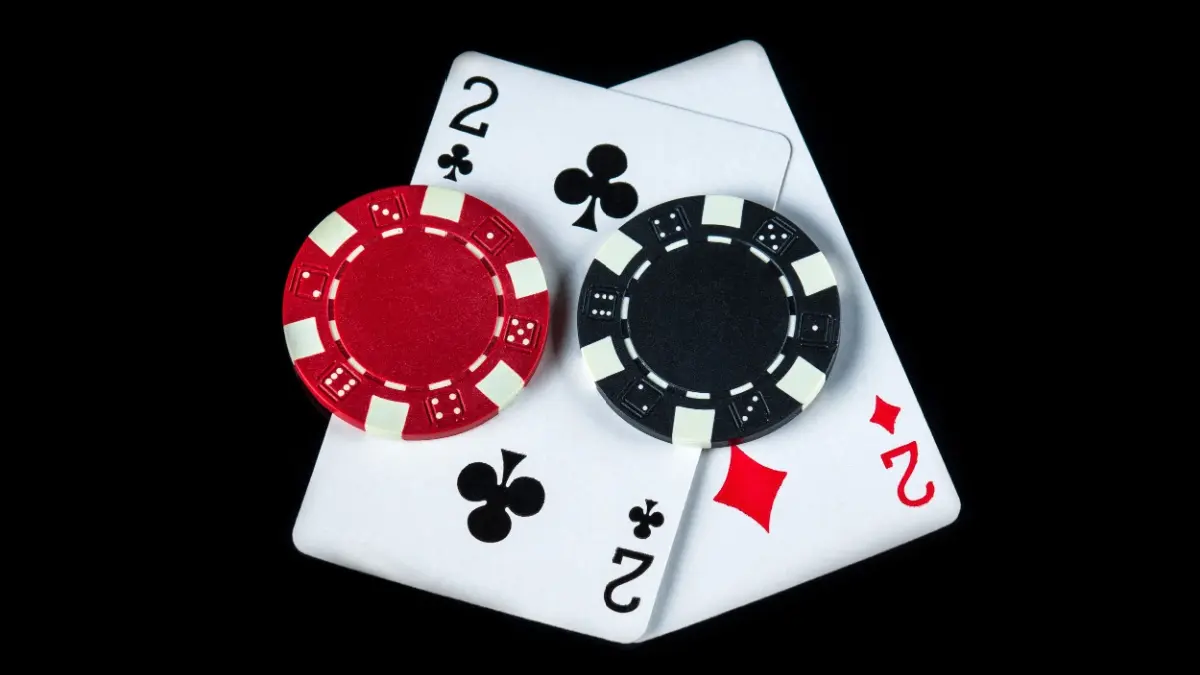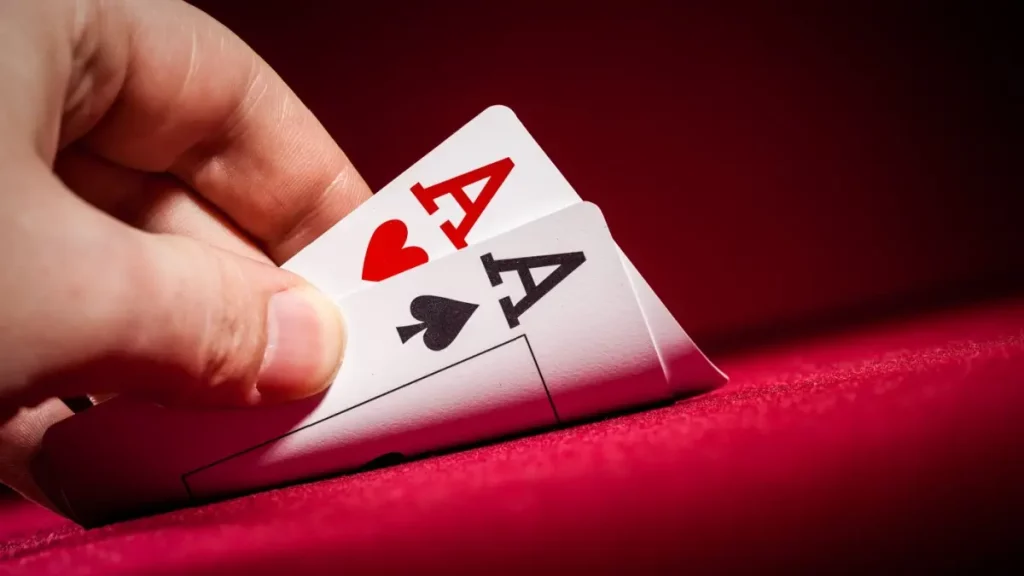Knowing when to split your hand in online blackjack isn’t just a flashy move—it’s a strategic play that can seriously cut into the house edge. While the game already offers some of the best odds on the floor, mastering your split decisions takes your advantage to the next level. From doubling your chances with a pair of Aces to avoiding costly mistakes with 10s, timing your split can turn a losing hand into a winning one.
Let’s break down exactly when—and why—you should split in blackjack.
What Does Split Mean in Blackjack?
Splitting is a strategic move in blackjack that occurs when you are dealt a pair of identical-value cards. With this move, you separate the pair into two independent hands, each requiring an additional play equal to the original play. The split hands then play out separately against the dealer as usual.
Importance of Splitting in Blackjack
Splitting is a crucial component of basic blackjack strategy because it allows you to optimize your hand’s potential. Certain pairs, when split, can lead to more favorable outcomes compared to playing them as a single hand. By splitting, you can either reduce your losses in a bad situation or maximize your potential winnings in a good one.
How Splitting Affects Your Winnings and RTP
When used correctly, splitting can boost your chances of winning and actually increase your return to player (RTP) percentage. In blackjack, splitting at the optimal moment can push the RTP above 99%.
For example, standing on a pair of 8s against a dealer’s 10 results in an expected loss, whereas splitting them gives you a better chance to win at least one hand or minimize losses. In contrast, splitting a pair of Aces gives you two opportunities to hit a strong hand.
Related:
When to Split in Blackjack
To boost your profits and minimize losses, knowing when to split (and when not to) is essential. Here is a detailed breakdown of the optimal times to split in blackjack:
1. Always Split Aces (A-A)
Aces are the best hand to split because by splitting Aces, you create two hands that each start with an 11, giving you two chances to hit a 10-value card and achieve blackjack.
2. Always Split Eights (8-8)
A pair of 8s is one of the worst hands in blackjack because you’ll likely bust if you hit, but if you stand, the dealer will often make a stronger hand.
Splitting 8s gives you a chance to improve to stronger hands (like 18, 19, or 20) instead of being stuck with a weak total. Even if the dealer has a strong card (9, 10, or Ace), splitting still reduces long-term losses compared to standing or hitting.
3. Split Nines (9-9) Against Dealer 2-9 (Except 7)
A pair of 9s is a strong hand, but it still gives the dealer a decent shot at beating you. Splitting allows you to create two hands that could potentially reach 19 or 20, which any dealer will have a tough time taking down.
If the dealer has a 7, 10, or Ace, keeping 18 is often preferable because the dealer is likely to end up with a total of 17 or bust.
4. Split Sevens (7-7) Against Dealer 2-7
A pair of 7s is a weak total that is hard to improve without busting. If the dealer has 2-7, their final hand is uncertain, and splitting gives you two opportunities to win.
If you are up against dealer 8 or higher, you are forced to risk busting and hit because you likely need a 19+ to win.
5. Split Sixes (6-6) Against Dealer 2-6
A pair of 6s is risky to hit since many drawn cards can bust you. Splitting allows you to start with 6 on each hand, which means there are more cards in the deck that will improve your hand.
If the dealer is showing a 7 or higher, you will need to hit and hope you’re dealt a 6, 7, 8, or 9, but the dealer will often make a strong hand.
6. Split Fours (4-4) Against Dealer 5-6 and Only When Allowed to Double After Splitting
In almost all scenarios, you are better off hitting when you have a pair of 4s. This is because an 8 is a decent hand, and any 10 or picture card will often create a winning hand. However, if the dealer has a 5 or 6, and you are allowed to double down after splitting, then it makes sense to split.
7. Split Twos and Threes (2-2, 3-3) Against Dealer 4-7
A pair of 2s or 3s equals 4 or 6, which are weak starting hands. Splitting against dealer 4-7 allows you to improve your hands and avoid being stuck with a poor total. When the dealer shows an 8 or higher, you need a Hail Mary and must hit and keep hitting until you make a 17+.

When Not to Split in Blackjack
Splitting isn’t always beneficial. Here are situations where you should avoid splitting:
Never Split Tens (10-10)
A pair of 10s equals 20, an excellent hand that should never be broken up because, in most cases, you’ll beat the dealer. If you split, you will likely end with a hand lower than 20 or go bust.
Never Split Fives (5-5)
A pair of 5s equals 10, a strong starting point for doubling down. Splitting creates two weak hands (starting at 5) rather than one strong potential 20.
Only Split Fours (4-4) Very Rarely
If the dealer shows a 5 or 6, and you are allowed to double after splitting, then you can split 4s. In all other circumstances, you should hit.
Conclusion
Splitting is one of the most powerful strategies in blackjack when used correctly. Understanding when to split, when not to, and how it affects your winnings can greatly improve your odds of success.
By following basic blackjack strategy, you can enhance your overall RTP and increase your chances of walking away a winner. Before you split, don’t just think about your hand — consider the dealer’s upcard as well!
Ready to try your hand? Try your luck with live blackjack at McLuck!
More Blackjack Guides:
FAQs
Should you ever split 10s?
No, you should never split 10s. A pair of 10s gives you a strong hand total of 20, which is highly likely to win against the dealer. Splitting them would create two weaker hands, risking your advantage and lowering your expected return. Keeping 20 is almost always the best play.
Should I split 9s in blackjack?
Yes, but only in specific situations. You should split 9s when the dealer has a 2-6, 8, or 9. Splitting gives you two hands that can reach 19 or 20, boosting your chances of winning. However, if the dealer has a 7, it is better to stand on 18 since the dealer is likely to end with 17. Against a 10 or Ace, standing is usually a better choice.
What numbers should you never split in blackjack?
You should never split 10s because a total of 20 is too strong to break up. 5s are another pair you don’t want to split. In almost all scenarios, it’s optimal to double down. Finally, the only time we recommend splitting 4s is if the dealer is showing a 5 or 6 and you’re allowed to double after a split.
Why do you always split 8s?
You always split 8s because a pair of 8s equals 16, one of the worst hands in blackjack. Splitting gives you two chances to build stronger hands (like 18, 19, or 20) and reduce your losses over time. Even against strong dealer cards, splitting 8s is a better option than playing 16.
Should you ever split 4s?
Generally, no. A pair of 4s equals 8, which is a decent total to hit. Splitting creates two weak hands starting at 4. However, if the rules allow doubling after splitting, it may be worth splitting against a dealer’s 5 or 6, as you can potentially build strong double-down hands.
Should you split 2 Aces in blackjack?
Yes, always split Aces. Aces count as 11, and splitting gives you two chances to hit a 10, potentially forming two hands of 21.

